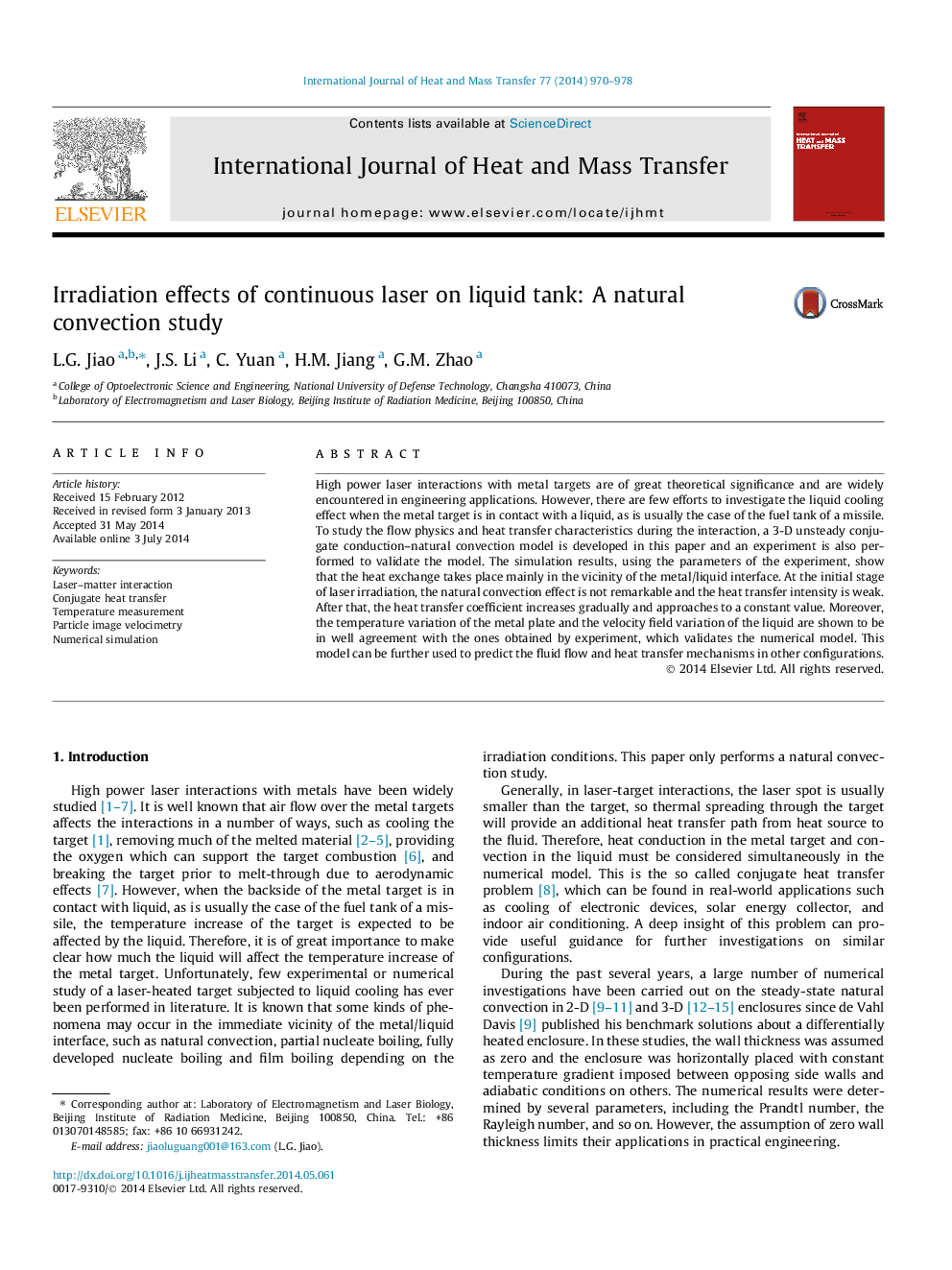| Article ID | Journal | Published Year | Pages | File Type |
|---|---|---|---|---|
| 657848 | International Journal of Heat and Mass Transfer | 2014 | 9 Pages |
Abstract
High power laser interactions with metal targets are of great theoretical significance and are widely encountered in engineering applications. However, there are few efforts to investigate the liquid cooling effect when the metal target is in contact with a liquid, as is usually the case of the fuel tank of a missile. To study the flow physics and heat transfer characteristics during the interaction, a 3-D unsteady conjugate conduction-natural convection model is developed in this paper and an experiment is also performed to validate the model. The simulation results, using the parameters of the experiment, show that the heat exchange takes place mainly in the vicinity of the metal/liquid interface. At the initial stage of laser irradiation, the natural convection effect is not remarkable and the heat transfer intensity is weak. After that, the heat transfer coefficient increases gradually and approaches to a constant value. Moreover, the temperature variation of the metal plate and the velocity field variation of the liquid are shown to be in well agreement with the ones obtained by experiment, which validates the numerical model. This model can be further used to predict the fluid flow and heat transfer mechanisms in other configurations.
Keywords
Related Topics
Physical Sciences and Engineering
Chemical Engineering
Fluid Flow and Transfer Processes
Authors
L.G. Jiao, J.S. Li, C. Yuan, H.M. Jiang, G.M. Zhao,
